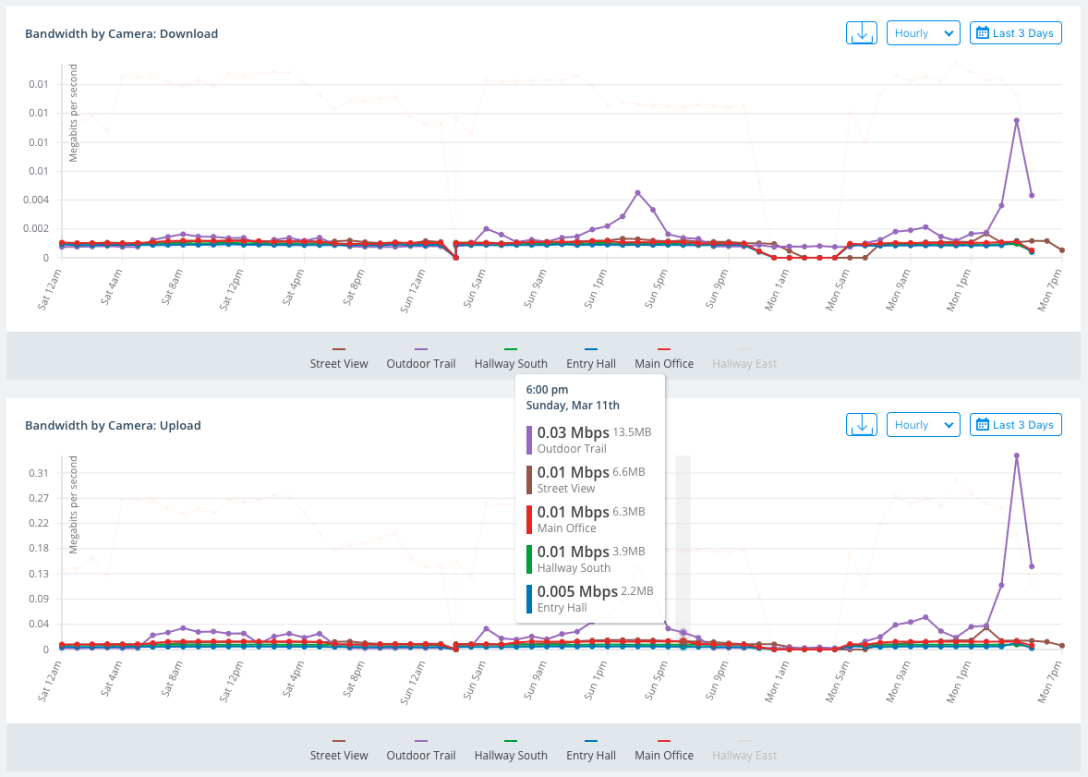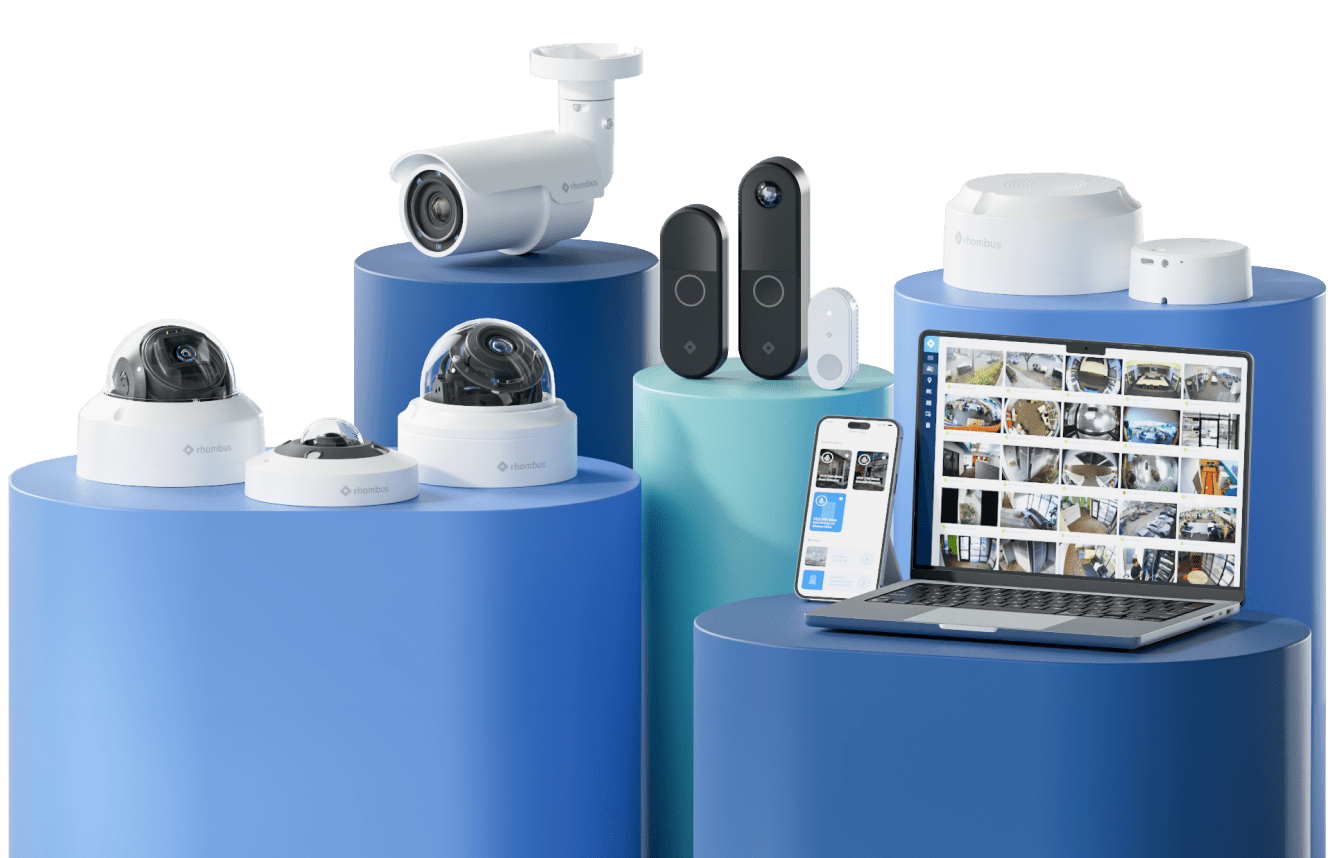
Optimizing Bandwidth and Storage in Security Cameras
April 14, 2018

When talking to potential customers, two frequent questions are, "how much bandwidth do your cameras consume?" and "how long do they store the video?" Before we address these questions, I think it's important we provide a little history on how we ended up with the solution we have.
When we first started the company, we talked to numerous IT managers and one of their first concerns was around bandwidth. They consistently said that if they were going to setup a lot of these cameras (30+), they couldn't have them uploading video to the cloud as the consumer solutions like Nest cameras do. To give an idea of how quickly your bandwidth might be saturated, a camera will take around 0.5 Mbps - 1 Mbps to stream video to the cloud. If you are running 30 cameras, that's 15 - 30 Mbps of constant data usage and 100 cameras would be 50 - 100 Mbps. For a lot of companies, these numbers would quickly start to strain or even overload their network.
Bandwidth Consumption
So, back to the question of how much bandwidth our cameras take. Given that we store all the video locally on the camera, we take negligible upload and download bandwidth. It's usually around .01 Mbps which consists of diagnostic information or some clips that need additional processing by the server.
When we do live stream video over the Internet, the cameras and server dynamically adjust the stream quality to provide uninterrupted streaming while efficiently utilizing the upload bandwidth of the camera network. This technique enables the video to play at near real-time with no buffering or missed video segments. Furthermore, while the quality of the live stream is constantly adjusted during network bandwidth fluctuations, the video on the camera is stored at a high quality for later retrieval and usage.
To best help customers understand camera bandwidth usage, we recently released bandwidth reports which you can see a sample of below. This way, the data is all transparent to our customers and they can make the best possible decisions based on their network. 
How Good is the Streaming and Bandwidth Usage?
Aside from the numbers we shared above, it's sometimes hard to picture what they mean. For that, we'll share a recent customer story, We had a customer that needed to deploy cameras in the middle of Alaska over MiFi hotspots. We were nervous about the reliability of the internet connection, but ended up being able to put 5 cameras on each MiFi and stream them from Alaska to the continental US with no problem.
It's not common for customers to use a MiFi, but it does actually come up more than we expected for ad hoc types of deployments.
Storage Duration
Finally, on the topic of how long we store the video data for, we aim to store it a minimum of 14 days. We have recently released a new feature that lets customers decide if they want higher quality (less storage time) or lower quality and longer storage duration. This allows customers to to customize the product to best suit their needs and the demands of their business.

In the case where our customers need more than 14 days of storage, we do offer cloud storage which can give businesses and enterprises an unlimited amount of storage time.
Summary
All of the above features are included as part of every Rhombus subscription plan. If you'd like to learn more, please reach out to our sales team!

Try Rhombus for Free!
See why school districts, cities, and Fortune 500 companies use Rhombus.
Start Trial

